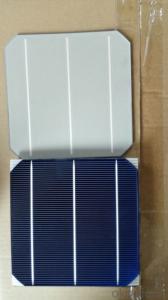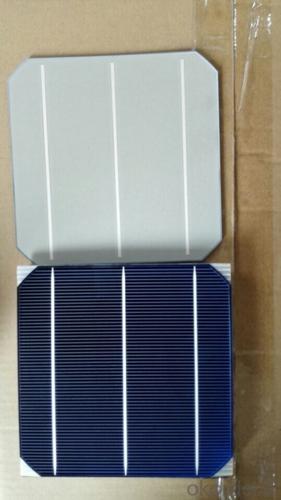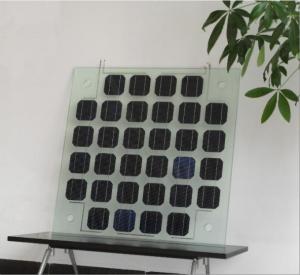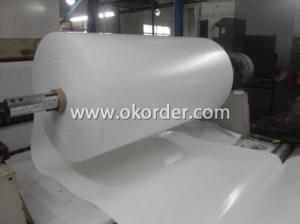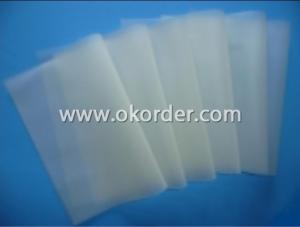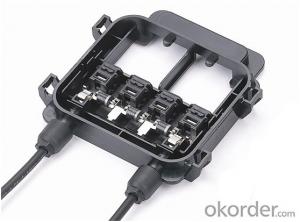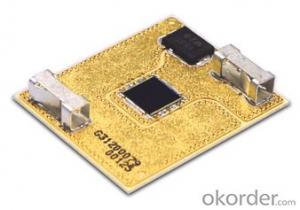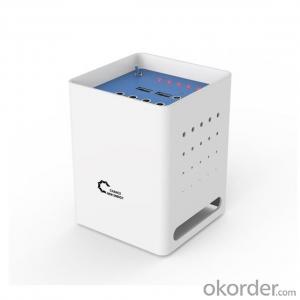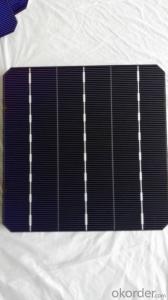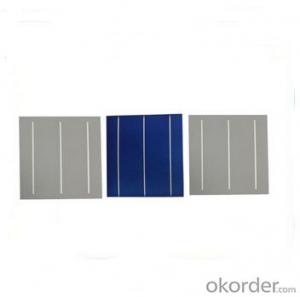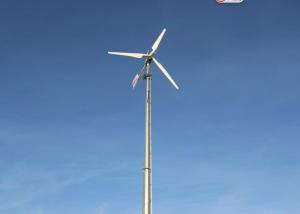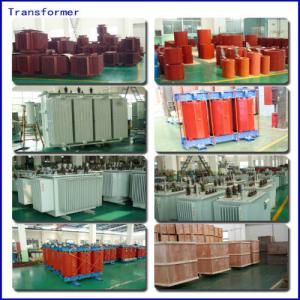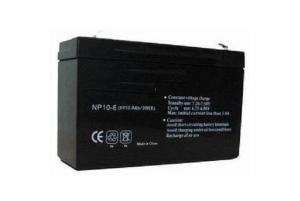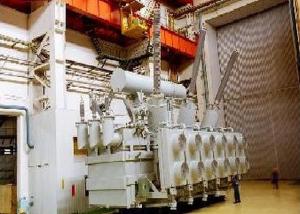Poly Solar Cells for Industry Use 156*156mm
- Loading Port:
- China Main Port
- Payment Terms:
- TT or LC
- Min Order Qty:
- -
- Supply Capability:
- -
OKorder Service Pledge
OKorder Financial Service
You Might Also Like
Features
1.High conversion efficiency resulting in superior power output performance.
2.Outstanding power output even in low light or high temperature conditions
3.Optimized design for ease of soldering and lamination
4.Long-term stability,reliability and performance
5.Output power tolerance of +/-3%
Physical characteristics
Dimension: 156*156mm±0.5mm
Thickness: wafer(si): 200μm±20μm
Cell: 240μm±40μm
Front: silver bus bars;dark blue/others silicon nitride anti reflection coating
Back: silver/aluminum bus bars;full-surface aluminum BSF

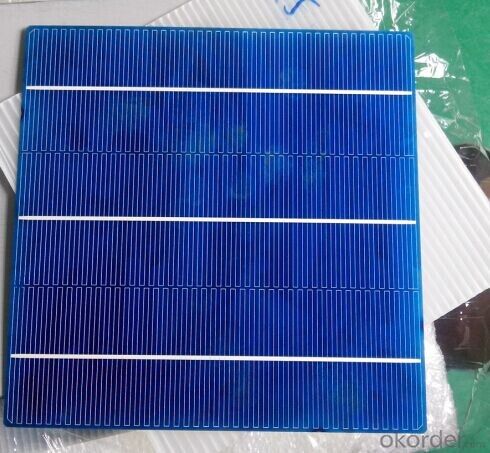
Electrical characteristics
Efficiency code | Efficiency(%) | Pmax(w) | Impp(A) | Vmpp(V) | Isc(A) | Voc(V) |
182 | ≥18.20 | 4.43 | 8.26 | 0.536 | 8.71 | 0.634 |
180 | 18.0-18.2 | 4.38 | 8.22 | 0.533 | 8.68 | 0.632 |
178 | 17.8-18.0 | 4.33 | 8.17 | 0.530 | 8.63 | 0.630 |
176 | 17.6-17.8 | 4.28 | 8.12 | 0.527 | 8.60 | 0.627 |
174 | 17.4-17.6 | 4.23 | 8.08 | 0.524 | 8.56 | 0.625 |
172 | 17.2-17.4 | 4.19 | 8.05 | 0.521 | 8.53 | 0.622 |
170 | 17.0-17.2 | 4.14 | 7.99 | 0.518 | 8.49 | 0.620 |
168 | 16.8-17.0 | 4.09 | 7.94 | 0.515 | 8.45 | 0.618 |
Data under standard testing conditions(STC):1000W/Sq.m, AM1.5, 25℃
Warranty
25-years limited warranty on power output: 10 years/90%, 25 years/80%
FAQ
Photovoltaic cells are made of special materials called semiconductors such as silicon, which is currently used most commonly. Basically, when light strikes the cell, a certain portion of it is absorbed within the semiconductor material. This means that the energy of the absorbed light is transferred to the semiconductor. The energy knocks electrons loose, allowing them to flow freely.
PV cells also all have one or more electric field that acts to force electrons freed by light absorption to flow in a certain direction. This flow of electrons is a current, and by placing metal contacts on the top and bottom of the PV cell, we can draw that current off for external use, say, to power a calculator. This current, together with the cell's voltage (which is a result of its built-in electric field or fields), defines the power (or wattage) that the solar cell can produce.
Send your message to us
Poly Solar Cells for Industry Use 156*156mm
- Loading Port:
- China Main Port
- Payment Terms:
- TT or LC
- Min Order Qty:
- -
- Supply Capability:
- -
OKorder Service Pledge
OKorder Financial Service
Similar products
Hot products
Hot Searches
Related keywords
